
Electronic equipment provider Vontier (NYSE: VNT) reported Q1 CY2025 results topping the market’s revenue expectations, but sales fell by 1.9% year on year to $741.1 million. Guidance for next quarter’s revenue was better than expected at $735 million at the midpoint, 1.2% above analysts’ estimates. Its non-GAAP profit of $0.77 per share was 6.4% above analysts’ consensus estimates.
Is now the time to buy Vontier? Find out by accessing our full research report, it’s free.
Vontier (VNT) Q1 CY2025 Highlights:
- Revenue: $741.1 million vs analyst estimates of $721.1 million (1.9% year-on-year decline, 2.8% beat)
- Adjusted EPS: $0.77 vs analyst estimates of $0.72 (6.4% beat)
- Adjusted EBITDA: $173.4 million vs analyst estimates of $168.4 million (23.4% margin, 2.9% beat)
- The company reconfirmed its revenue guidance for the full year of $3.01 billion at the midpoint
- Management reiterated its full-year Adjusted EPS guidance of $3.08 at the midpoint
- Operating Margin: 17.6%, down from 18.8% in the same quarter last year
- Free Cash Flow Margin: 12.5%, up from 9.4% in the same quarter last year
- Organic Revenue was flat year on year (3.9% in the same quarter last year)
- Market Capitalization: $4.72 billion
Company Overview
A spin-off of a spin-off, Vontier (NYSE: VNT) provides electronic products and systems to the transportation, automotive, and manufacturing sectors.
Sales Growth
Examining a company’s long-term performance can provide clues about its quality. Any business can have short-term success, but a top-tier one grows for years. Regrettably, Vontier’s sales grew at a weak 1.4% compounded annual growth rate over the last five years. This fell short of our benchmarks and is a tough starting point for our analysis.
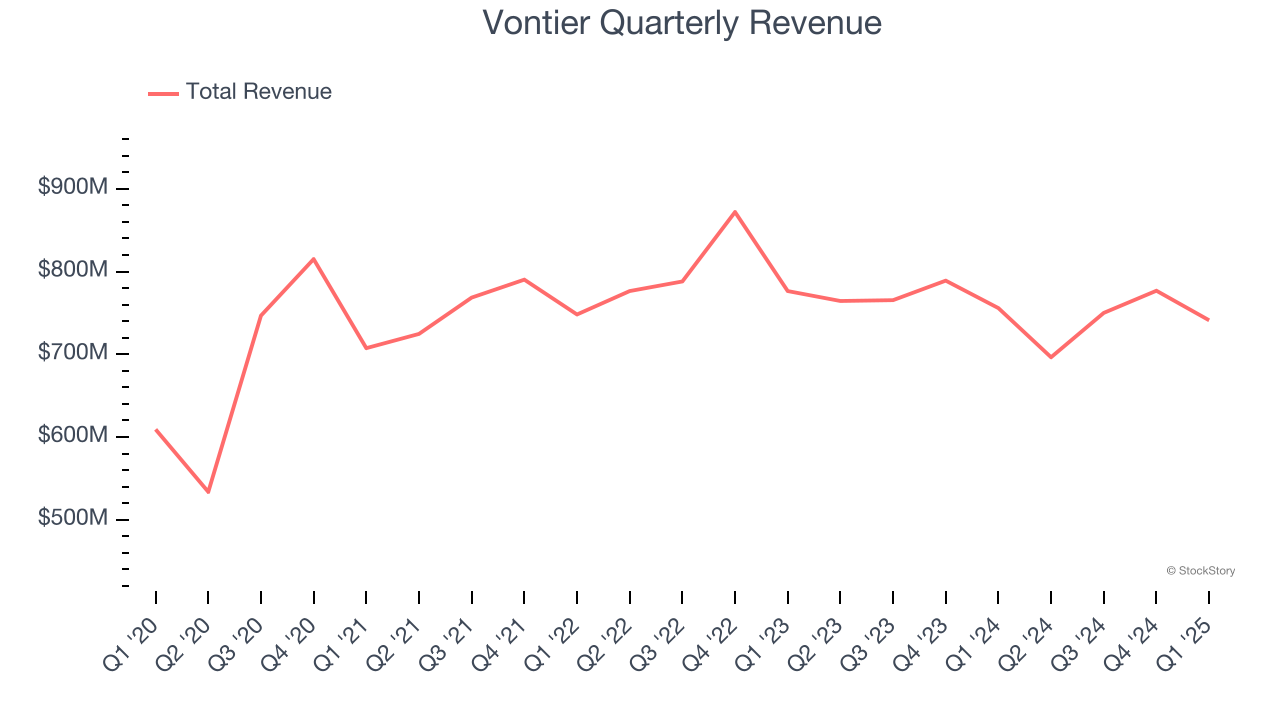
Long-term growth is the most important, but within industrials, a half-decade historical view may miss new industry trends or demand cycles. Vontier’s performance shows it grew in the past but relinquished its gains over the last two years, as its revenue fell by 3.9% annually. Vontier isn’t alone in its struggles as the Internet of Things industry experienced a cyclical downturn, with many similar businesses observing lower sales at this time. 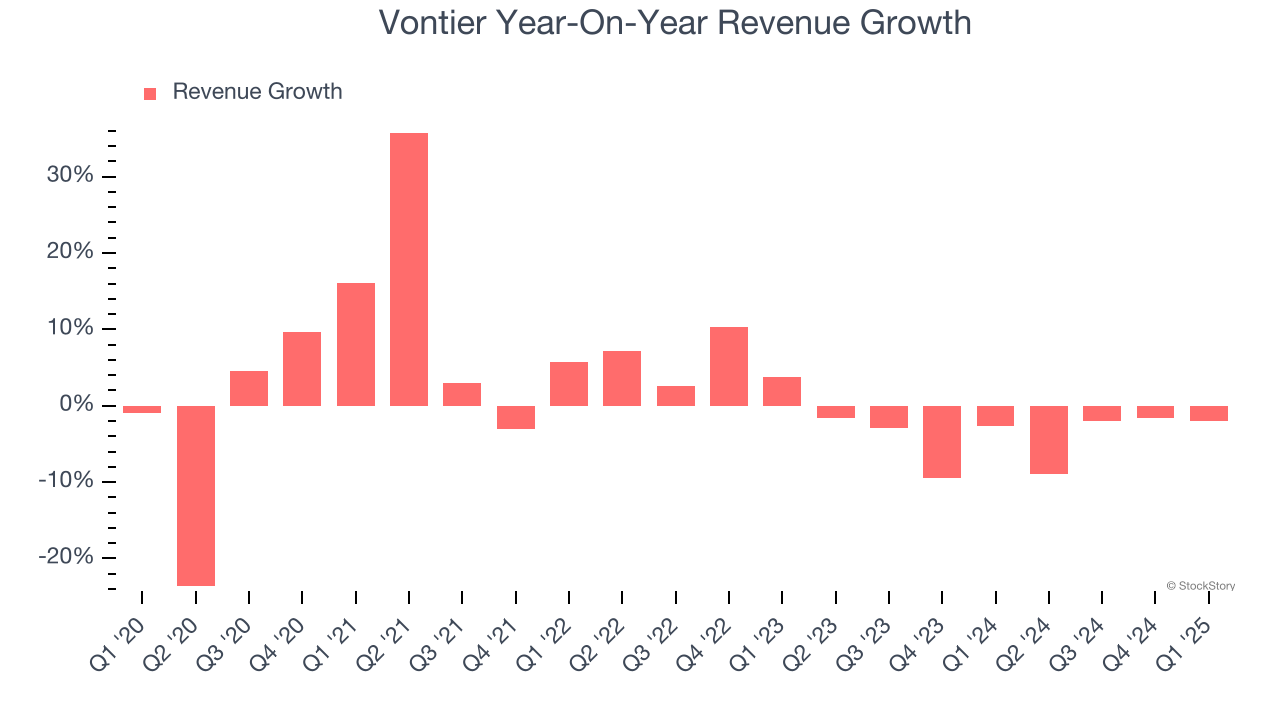
We can dig further into the company’s sales dynamics by analyzing its organic revenue, which strips out one-time events like acquisitions and currency fluctuations that don’t accurately reflect its fundamentals. Over the last two years, Vontier’s organic revenue was flat. Because this number is better than its normal revenue growth, we can see that some mixture of divestitures and foreign exchange rates dampened its headline results. 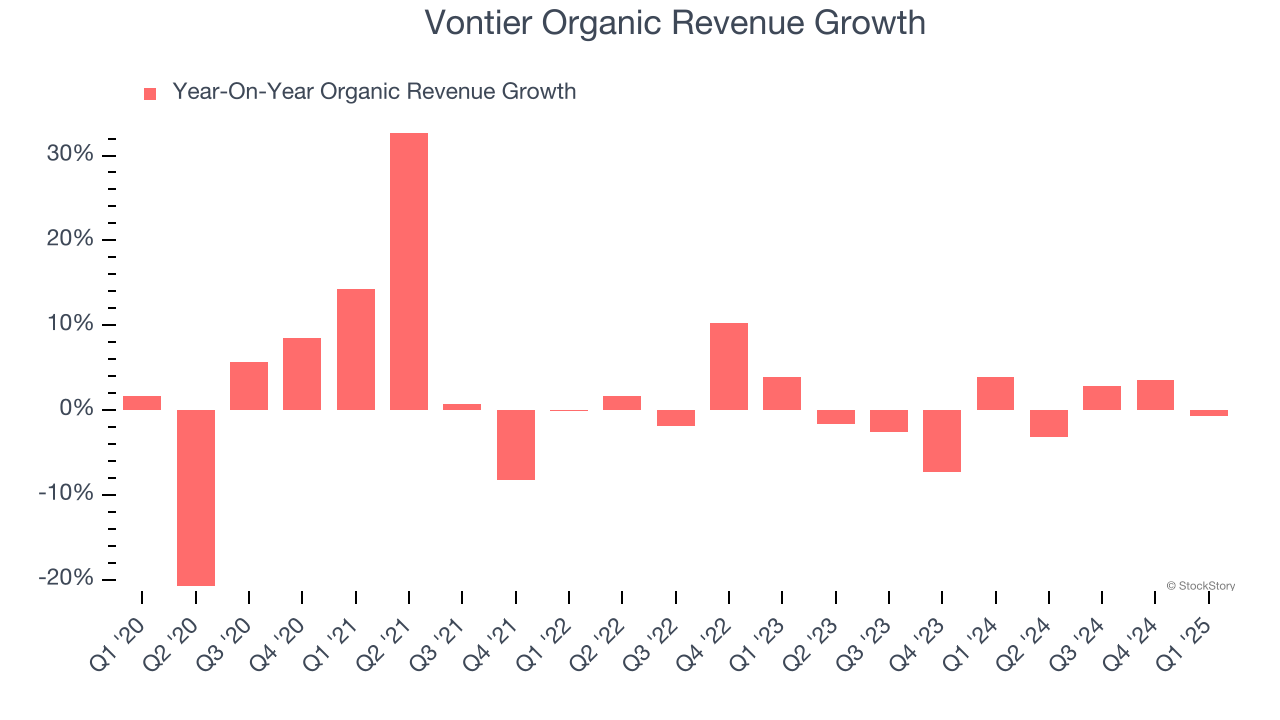
This quarter, Vontier’s revenue fell by 1.9% year on year to $741.1 million but beat Wall Street’s estimates by 2.8%. Company management is currently guiding for a 5.5% year-on-year increase in sales next quarter.
Looking further ahead, sell-side analysts expect revenue to grow 3% over the next 12 months. While this projection suggests its newer products and services will spur better top-line performance, it is still below the sector average.
Today’s young investors won’t have read the timeless lessons in Gorilla Game: Picking Winners In High Technology because it was written more than 20 years ago when Microsoft and Apple were first establishing their supremacy. But if we apply the same principles, then enterprise software stocks leveraging their own generative AI capabilities may well be the Gorillas of the future. So, in that spirit, we are excited to present our Special Free Report on a profitable, fast-growing enterprise software stock that is already riding the automation wave and looking to catch the generative AI next.
Operating Margin
Operating margin is a key measure of profitability. Think of it as net income - the bottom line - excluding the impact of taxes and interest on debt, which are less connected to business fundamentals.
Vontier has been a well-oiled machine over the last five years. It demonstrated elite profitability for an industrials business, boasting an average operating margin of 18.7%. This result isn’t surprising as its high gross margin gives it a favorable starting point.
Looking at the trend in its profitability, Vontier’s operating margin decreased by 3 percentage points over the last five years. This raises questions about the company’s expense base because its revenue growth should have given it leverage on its fixed costs, resulting in better economies of scale and profitability.
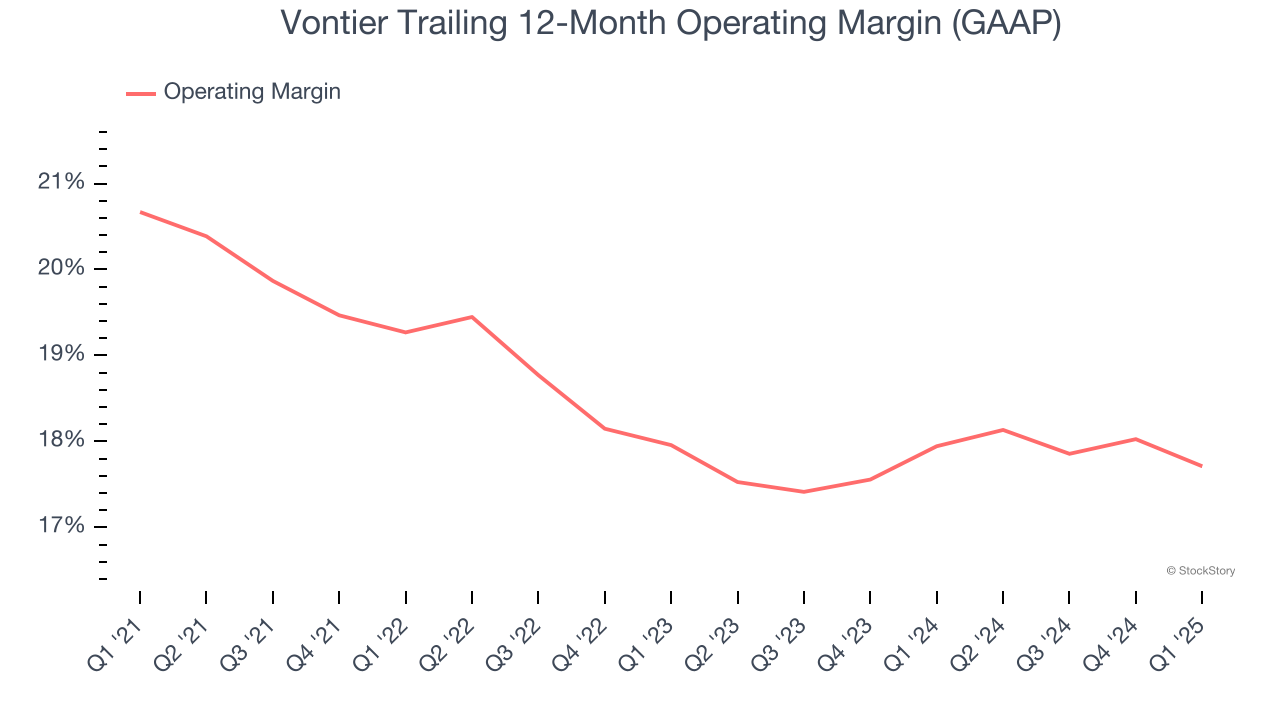
This quarter, Vontier generated an operating profit margin of 17.6%, down 1.2 percentage points year on year. Since Vontier’s gross margin decreased more than its operating margin, we can assume its recent inefficiencies were driven more by weaker leverage on its cost of sales rather than increased marketing, R&D, and administrative overhead expenses.
Earnings Per Share
Revenue trends explain a company’s historical growth, but the long-term change in earnings per share (EPS) points to the profitability of that growth – for example, a company could inflate its sales through excessive spending on advertising and promotions.
Vontier’s EPS grew at a weak 3.7% compounded annual growth rate over the last five years. This performance was better than its flat revenue but doesn’t tell us much about its business quality because its operating margin didn’t expand.
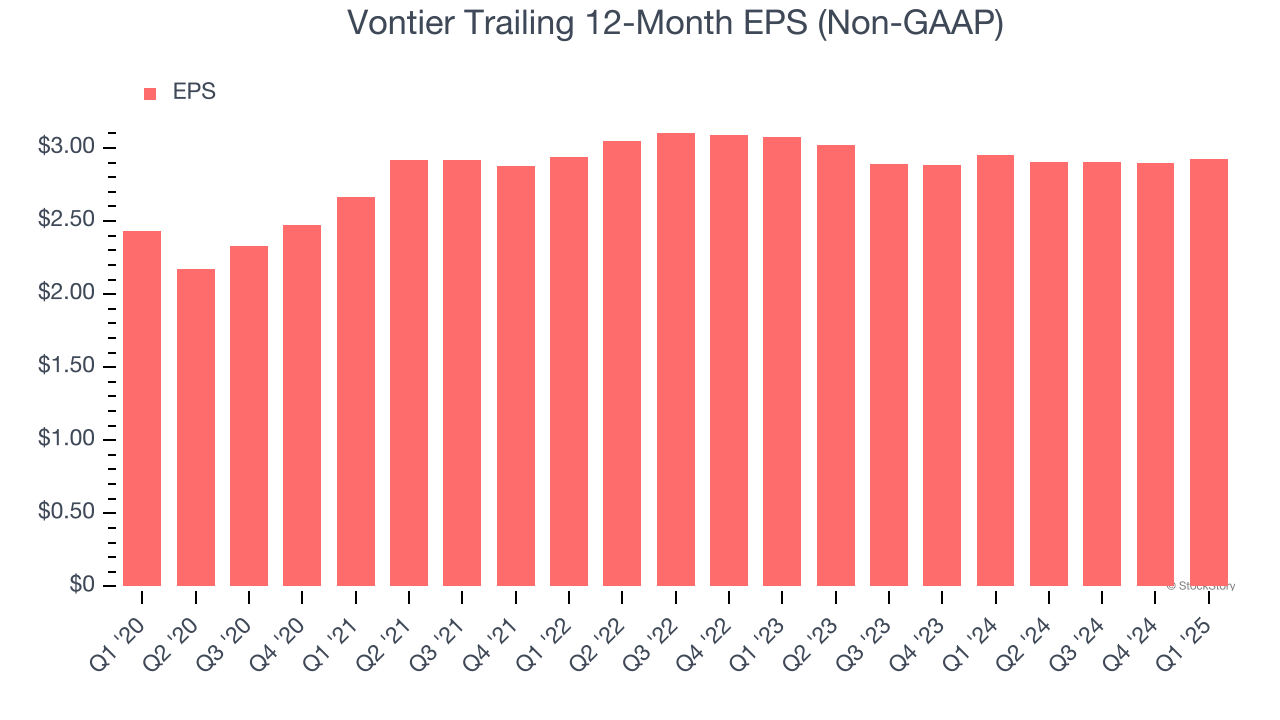
We can take a deeper look into Vontier’s earnings to better understand the drivers of its performance. A five-year view shows that Vontier has repurchased its stock, shrinking its share count by 11.2%. This tells us its EPS outperformed its revenue not because of increased operational efficiency but financial engineering, as buybacks boost per share earnings. 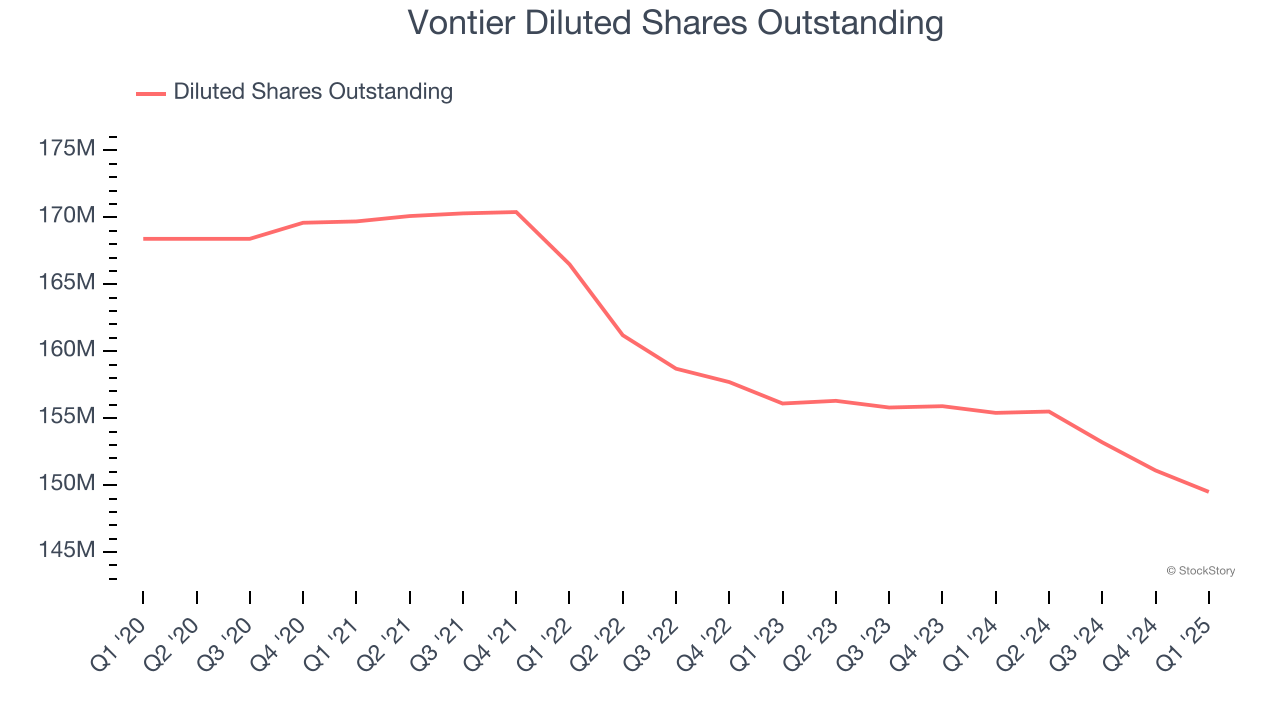
Like with revenue, we analyze EPS over a shorter period to see if we are missing a change in the business.
For Vontier, its two-year annual EPS declines of 2.5% show it’s continued to underperform. These results were bad no matter how you slice the data.
In Q1, Vontier reported EPS at $0.77, up from $0.74 in the same quarter last year. This print beat analysts’ estimates by 6.4%. Over the next 12 months, Wall Street expects Vontier’s full-year EPS of $2.92 to grow 8.5%.
Key Takeaways from Vontier’s Q1 Results
We enjoyed seeing Vontier beat analysts’ revenue expectations this quarter. We were also glad its organic revenue outperformed Wall Street’s estimates. On the other hand, its full-year EPS guidance was in line. Overall, this quarter had some key positives. The stock traded up 3.9% to $33.02 immediately after reporting.
Vontier may have had a good quarter, but does that mean you should invest right now? The latest quarter does matter, but not nearly as much as longer-term fundamentals and valuation, when deciding if the stock is a buy. We cover that in our actionable full research report which you can read here, it’s free.


